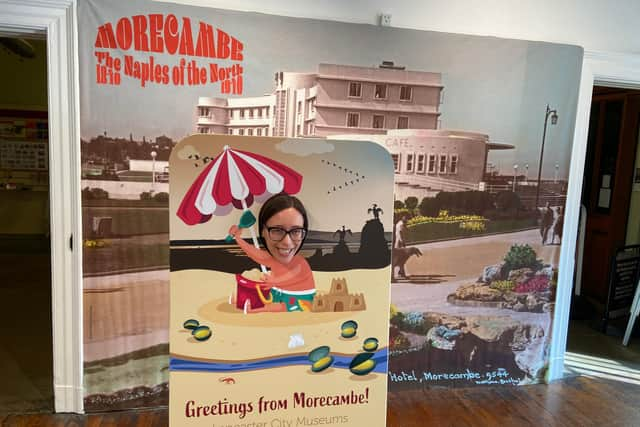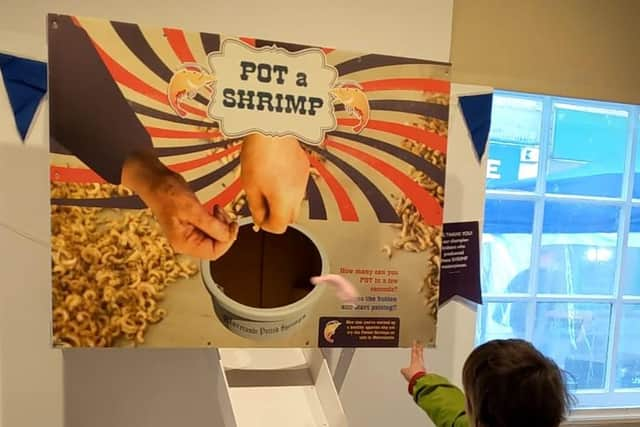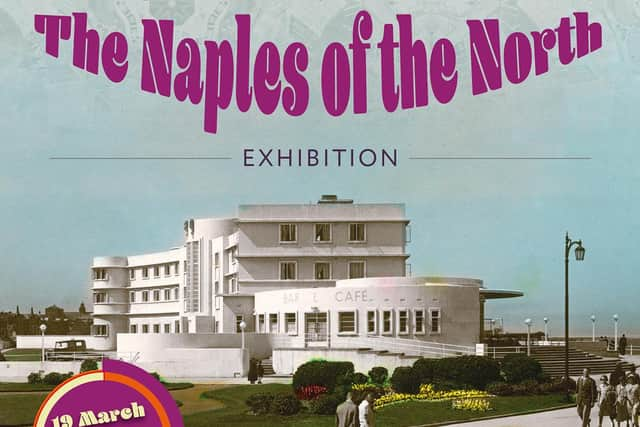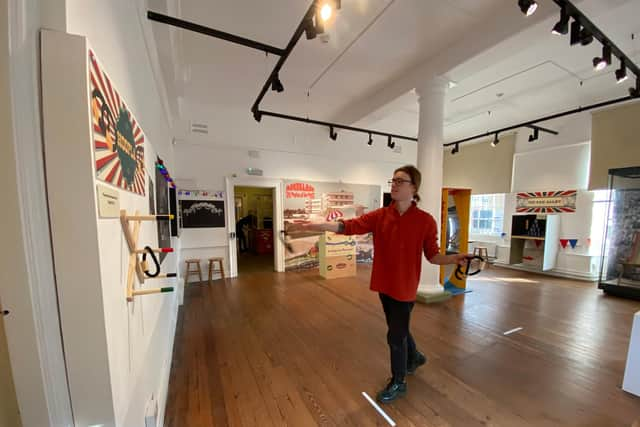Morecambe’s heyday captured in exhibition at Lancaster City Museum
and live on Freeview channel 276
Morecambe: The Naples of the North charts the resort’s development and also features a room full of traditional seaside amusements and games for visitors to enjoy.
As well as hoopla and a tin can alley, there’s a chance to pot some shrimps (of the woolly kind!) and see your body transformed in a distorting mirror, a staple of fun houses everywhere.
Advertisement
Hide AdAdvertisement
Hide AdAccording to the exhibition, cucumber ice cream was a popular flavour in Victorian times and in 1927, Britain could boast around 35,000 fish and chip shops. Now there’s just a third left.


The village of Poulton-le-Sands only officially became known as Morecambe in the 1880s, thanks mainly to the influx of visitors brought by the new railways.
The beauty of Morecambe Bay and its passing resemblance to the Bay of Naples, led it to become named ‘The Naples of the North’, a title used on railway posters at the time and celebrated in the exhibition.
In 1848, the Lancaster Gazette reported on the opening of the original Midland Hotel at the start of Lancaster’s Gala Week. A later, Art Deco version, brought a touch of class to the resort and still remains a destination in itself to this day.
Advertisement
Hide AdAdvertisement
Hide AdOf course, not all accommodation in Morecambe was as grand as the Midland. By the 1950s, the resort had around 1,300 places to stay from hotels and boarding houses to holiday camps at Heysham Towers and Middleton Towers.


One of the quirky facts displayed at the exhibition relates how one Morecambe landlady fitted 36 visitors into seven bedrooms at her boarding house!
As visitor numbers to Morecambe grew, so did the need for more attractions - some more unusual than others.
In 1905, the shipbreaking company, TW Ward brought quite a din to the town when it moved to the Stone Jetty. However, this didn’t prevent visitors taking tours around the site and seeing such vessels as German u-boats and RMS Majestic end their days.
Advertisement
Hide AdAdvertisement
Hide AdAnd for three years in the thirties, Eric the whale, a dead whale carcass, was a very popular attraction until he was eventually cremated in 1938 and replaced with a Big Dipper at the fun fair.


A much lighter attraction was Morecambe’s illuminations. In 1919, candles in coloured jars made up the Morecambe Peace Illuminations, only to be outdone five years later when the first proper illuminations with 40,000 bulbs went on display.
By 1949, 250,000 bulbs were strewn along the Promenade from the Battery to Happy Mount Park, complemented with illuminated tableaux.
Another of Morecambe’s popular outdoor attractions was its Super Swimming Stadium, an impressive model of which is on display at the exhibition.
Advertisement
Hide AdAdvertisement
Hide AdWhen night fell, Morecambe came alive again with a feast of entertainment provided by its many theatres, including the Winter Gardens which celebrates its 125th anniversary this year, and the resort’s Central and West End Piers, both, sadly, now gone.


Theatre posters show the variety of entertainment on offer and also on display is the ceremonial key which opened West End Pier and the scissors which cut the ribbon to the Central Pier’s new ballroom.
Morecambe: The Naples of the North is free to visit from Tuesday-Sunday until June 12.